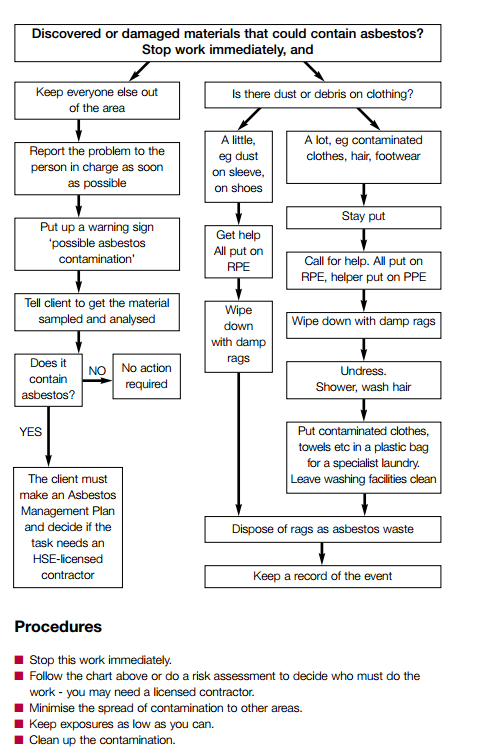Everyone in the trade is by now well aware of the health risk posed by exposure to asbestos and yet cases do still occur and education and training in awareness of the risks posed by asbestos and how best to reduce them is vital if asbestos poisoning cases are to be eradicated.

Good Practice and Awareness
In the pursuit of asbestos safety, it is imperative for those working in areas of risk to be cognisant of the likely locations for asbestos to be found. If you are ever at all unsure whether something is asbestos then always assume the worst until you can have the substance verified.
It is vital to keep in mind that it is impossible to be certain that tiles either on the floor or on the ceiling do not contain asbestos simply by giving them the once over. You should always check the local government website in your area for information as to who can take samples to determine asbestos content. Never try to take samples yourself unless you have a license to do so.
If, for any reason you suspect asbestos in your place of work or home (you might see a label or simply from experience) never disturb the area.
There are 8 things in particular that it is IMPERATIVE you do not do in an area you suspect of containing asbestos. These are:
- Cut
- Damage
- Move
- Disturb
- Saw
- Drill
- Hammer
- Break
What if I Uncover or Dislodge Asbestos?
The following chart is issued by the Health and Safety Executive. The guidelines will ensure you are normally doing enough to comply with the law and certainly offer excellent advice.
Asbestos Training
If, for instance, you run a building or painting and decorating company it is absolutely vital that you ensure that your employees (and yourself) are up-to-date with asbestos training. It is, in fact, a legal requirement that everyone who has the potential to encounter asbestos in their daily should have been given asbestos awareness training. UKATA (UK Asbestos Training Association) is the UK asbestos training association that sets the standards and courses for asbestos training.
Who Should be Given Asbestos Training?
You may not have any intention of removing asbestos, but assuming you plan to carry out any work on buildings that predate the turn of the millennium you need to be aware that asbestos is a possibility and must have undertaken the relevant asbestos removal training so that you know the risks and how to avoid them as well as what to do in an emergency.
There are certain areas of work that make it extra important that asbestos training is given. It is of great import that those whose work could see them “foreseeably disturb the fabric of a building and expose them to asbestos” (UKATA), as well as supervisors of such work, get this training.
It’s Not Just a Matter of Attending a Course
Simply turning up to a course on asbestos training or taking an online asbestos course does not equate to worker competence. This is only gained over a period of time and by putting skills learnt during training into practice as well as learning on the job, instructing others and assessing a variety of potentially confusing situations.